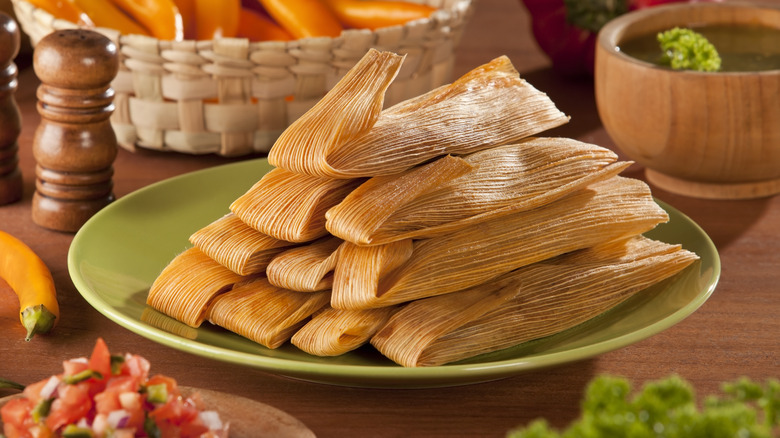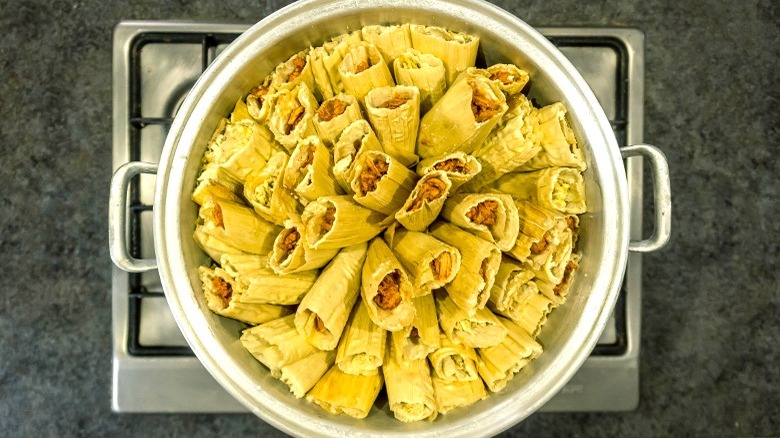How To Make Sure You Don't Run Out Of Water When Making Tamales
Special occasions in many Latin American households are marked by piles and piles of homemade tamales. To make them, it takes quite a bit of time, effort, and usually an assembly line of family and friends. They are layered into huge pots (we're talking as large as eight gallons)and steamed over low heat via water or broth gently boiling in the bottom of the vessel. Here's the challenge: It is near-impossible to check that the liquid has not evaporated, because there are dozens of hot tamales in the way.
However, pro chef Rick Martinez has an alternative strategy. The author behind the cookbook "Mi Cocina" — which covers Mexican foods ranging from citrusy carne asada to the Mexican-Chinese cuisine you can't find in the United States — told Food Republic that the secret to solving the water conundrum is to listen instead of look. "If you put your ear up to the pot, obviously don't burn your ear, but you can hear the bubbles," Martinez explained. "If you don't hear anything, then nothing's happening," he went on, which means that the flame is not high enough to produce the necessary steam, and you have to crank it up.
On the other hand, if your flame is too hot, the water can also evaporate too quickly. "If you hear sizzling ... now the corn husks on the bottom are burning," Martinez cautioned, meaning you need to add more liquid to the pot ASAP.
Rick Martinez' other tips for steaming tamales
Whether you are making and eating tamales for Día de los Muertos, Christmas, or another event, getting the steaming right is crucial. If the packages fall apart or cook unevenly, all that work will be for nothing. As such, it is important to arrange the tamales vertically, with the folded ends facing the bottom of the pot, so that the filling is protected from the water. As for how much liquid you need, every pot will differ. Instead of exact measurements, Rick Martinez recommended pouring an inch of liquid into the bottom — but make sure not to dump it directly onto the tamales. Set the burner to very low heat, and cook the tamales for 40 to 45 minutes, which Martinez called the "golden time."
Martinez also said that it is vital to have a tight-fitting lid on the pot. If you can't get a snug seal with your lid, the chef said "You can put a damp towel directly over the tamales inside the pot." Some people also enclose the last layer of tamales in more soaked corn husks. Then, you can cover the top of the pot in foil or plastic wrap before putting the lid on. The goal is to trap in as much moisture as possible, which is another reason why Martinez's method for listening for a bubbling sound makes so much sense. If you open the pot to try and check, you will release all of that precious steam.


